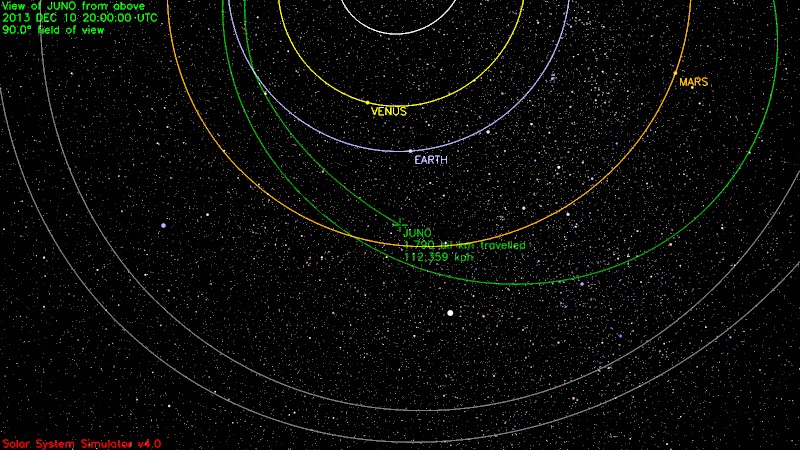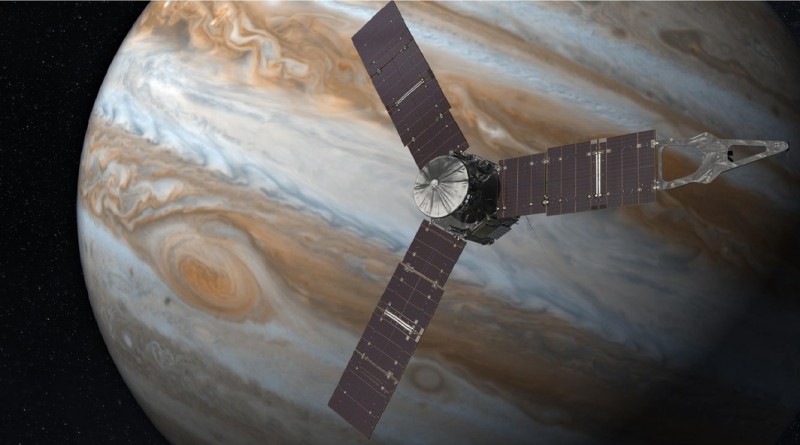Juno captures unique View of Earth & Moon in Cosmic Ballet
Originally published December 10, 2013
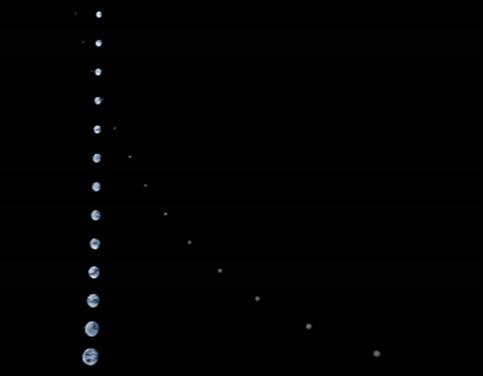
The Juno Mission Team presented science data and imagery collected by the Juno spacecraft during its Earth Flyby that took place on October 9, 2013 and boosted Juno’s velocity to change its orbit in order to reach Jupiter in 2016.
The Earth flyby was used by the mission team to practice the operation of the instruments of the spacecraft and collect scientific data on Earth’s particle & magnetic environment as well as spectrographic data of the Moon and Earth and a series of images using the JunoCam instrument. In addition to JunoCam, the Star Tracker of the Magnetometer instrument started to take images of Earth and Moon when the spacecraft was on approach for its flyby.
The result of that imaging campaign was a unique view of the Earth-Moon system. Although the star trackers were not built for taking images of planetary bodies, the low-resolution video provides a stunning view of the cosmic ballet of Earth and Moon. Starting out 966,000 Kilometers from Earth, the Star Trackers captured one frame each time the camera was facing Earth at the precisely timed moment as Juno was spinning at 2 rpm.
The video that was created shows Earth as a small blue marble and the Moon as a faint dot that initially transits across Earth. As Juno got closer, the separation distance between the Earth and the Moon increases and some features of Earth including clouds and oceans become evident.
“In the movie, you ride aboard Juno as it approaches Earth and then soars off into the blackness of space. No previous view of our world has ever captured the heavenly waltz of Earth and moon,” said Scott Bolton, Juno principal investigator.
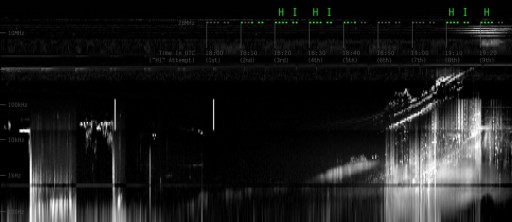
In addition to this stunning video, the results of the Hi Juno HAM Radio campaign were presented. As Juno made its Earth Flyby, HAM Radio operators around the world were invited to send a greeting in morse code to the Juno spacecraft that had its Waves instrument turned on to pick up radio waves including those sent by HAM Radio stations.
Operators were guided by a website so that all stations would simultaneously transmit the same message – “Hi” in Morse code, consisting of four dits for the H, a pause, and two dits for the I. The image to the right shows that Juno received its message loud and clear.
The video below is a short documentary on the Hi Juno campaign featuring Juno mission team members and participants that transmitted the message during the Earth Flyby.
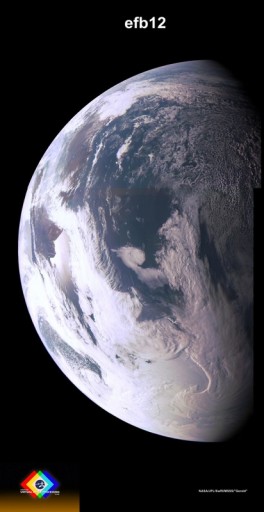
The mission team has also presented the scientific data gathered during the Flyby, but most of the data is still being analyzed. As part of the gravity assist flyby, the Juno team rehearsed an 11-day Jupiter Science Orbit centered around the Flyby, operating Juno’s instruments, gathering data and processing it to verify the Jovian data collection style in order to be ready for operations at Jupiter. As Juno flew past Earth, it made its way through a well understood environment – presenting a good calibration opportunity for the instruments aboard the vehicle.
The Ultraviolet Imaging Spectrograph collected UV spectra of the Moon and Earth’s airglow for sensitivity calibration while the JEDI (Jupiter Energetic Particle Detector Instrument) monitored energetic particles in the near-Earth space environment to gather baseline data to help understand JEDI data obtained during the science mission at Jupiter. In addition to receiving the Hi Juno message, the Waves instrument also recorded natural radio emissions near Earth to validate instrument functionality and the performance of the solar array noise cancelation algorithm. JIRAM, the Jovian Infrared Auroral Mapper, also collected images and spectra of the Moon for instrument calibration.
Juno’s Flyby also featured coordinated observations with the Van Allen Probes and THEMIS missions to provide precise measurements of electric fields, energetic ions and energetic electrons to help characterize data collected by Juno.
The Juno team will continue to work through the data acquired during the Flyby to characterize the instruments for optimal science operations once the spacecraft reaches Jupiter.
As of 20 UTC on December 10, 2013, Juno had completed 1.79 billion Kilometers of its 2.83-billion-Kilometer journey to Jupiter. Juno was 66.8 million Kilometers from Earth traveling at a relative velocity of 64,400 Kilometers per hour. The current communications delay was 3 minutes and 43 seconds. Relative to the sun, Juno was traveling 112,392km/h at a distance of 211.4 million Kilometers. The spacecraft was 596.6 million Kilometers from Jupiter moving at a relative speed of 93,450km/h.
